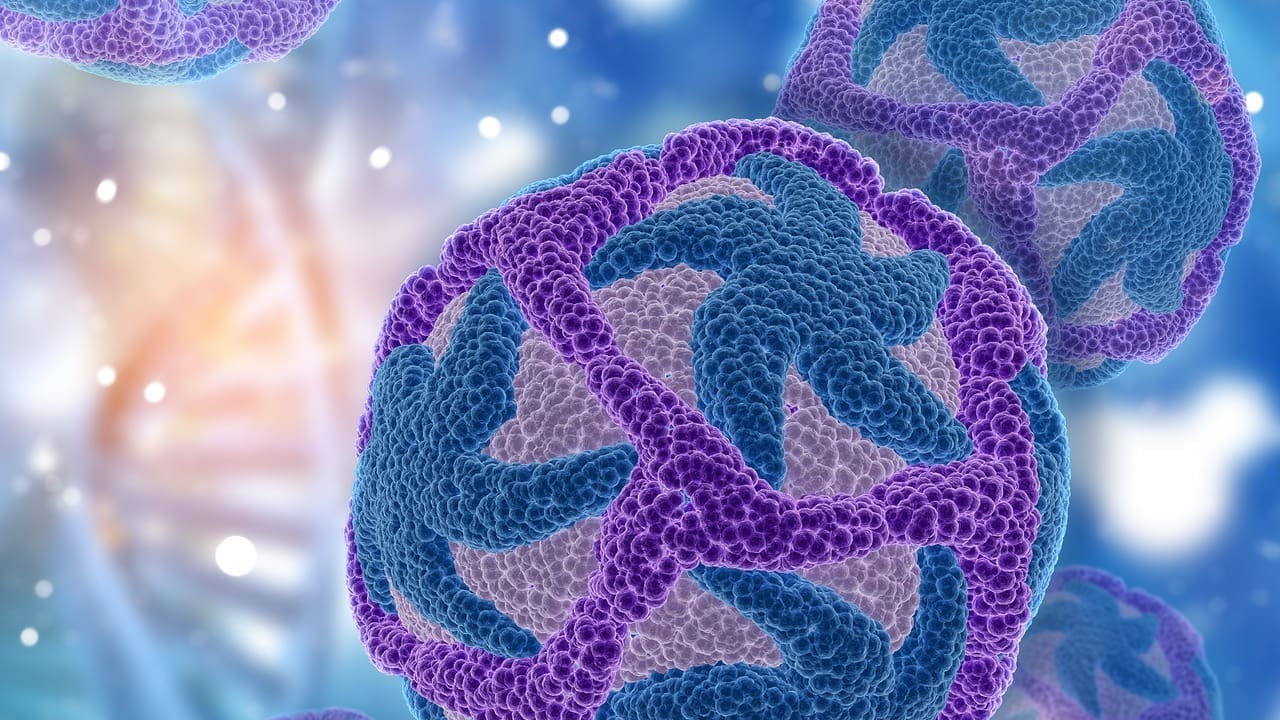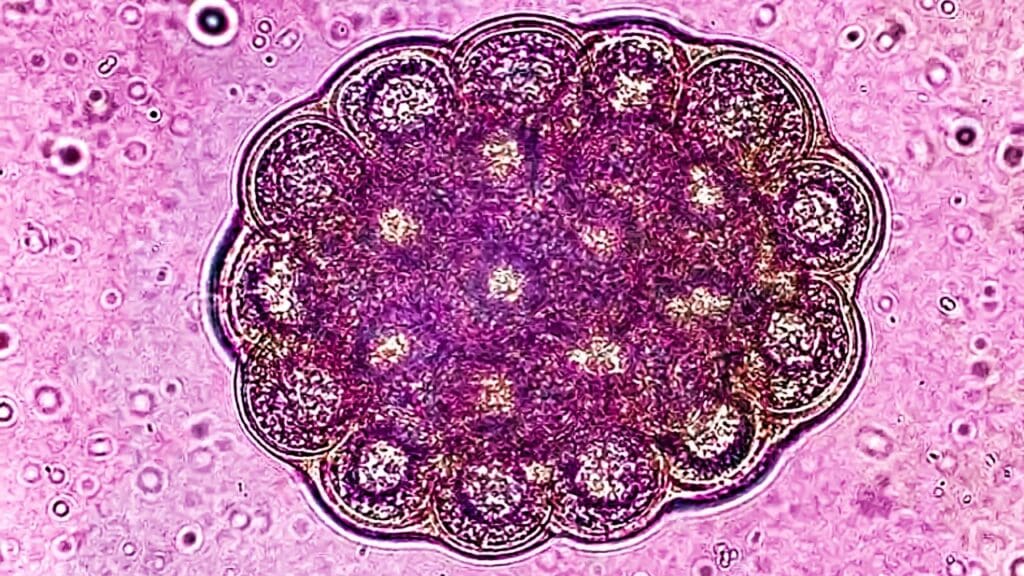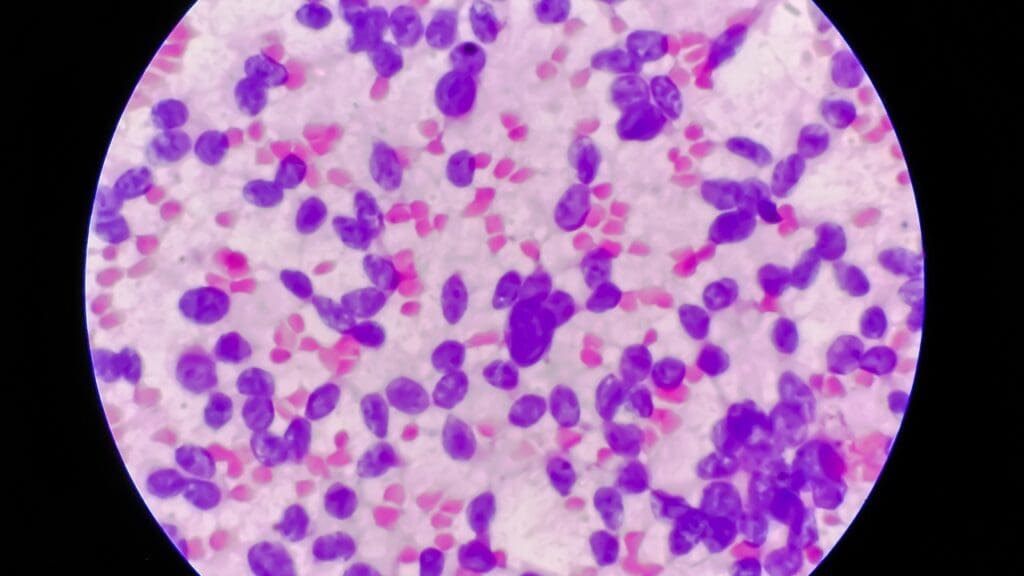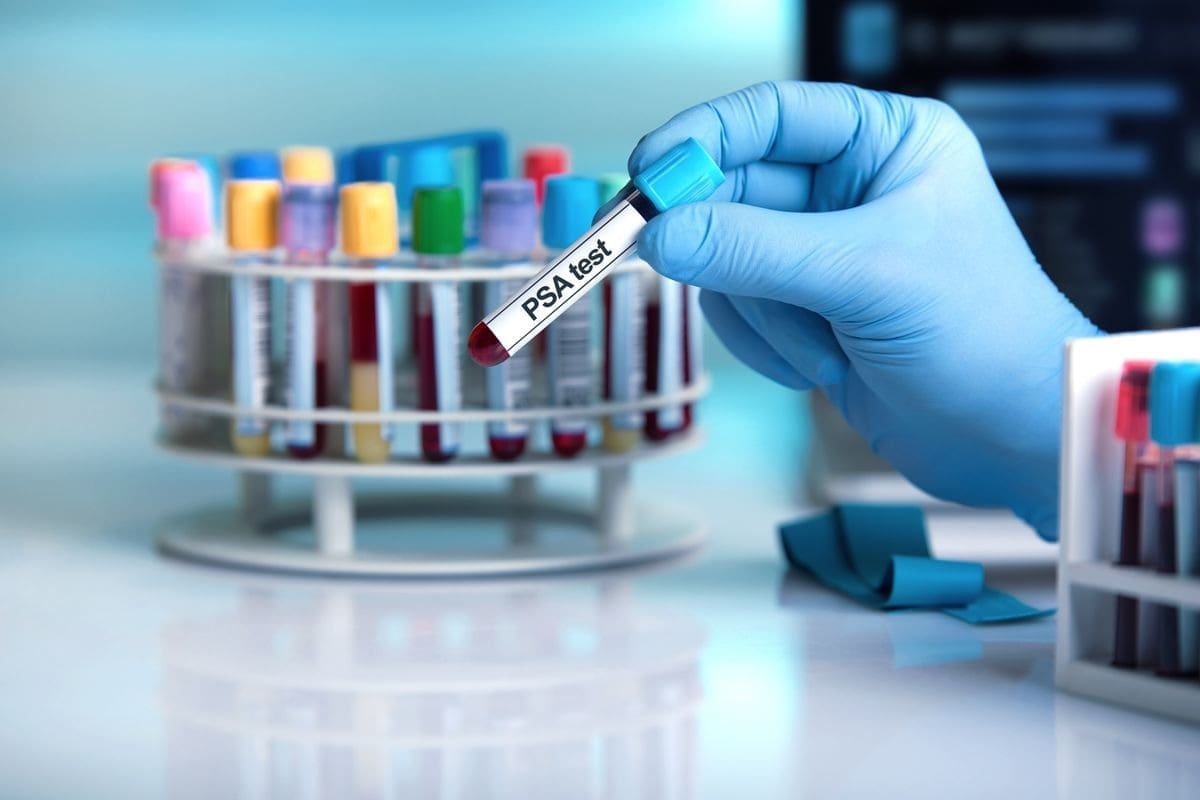Last Updated on November 26, 2025 by Bilal Hasdemir

Getting a diagnosis of advanced diffuse large B-cell lymphoma can feel scary. But knowing about it is key to finding the right treatment and understanding your chances of survival.
At Liv Hospital, we’re all about giving cutting-edge care and support to those facing this tough challenge. Our team of experts is here to offer personalized care. We aim to give you the best chance at a good outcome.
New treatments like immune therapies and custom chemotherapy have made a big difference. Now, about 70% of people with Stage 4 DLBCL can survive for five years. We’re working hard to keep improving patient care with our team approach and focus on you.
Key Takeaways
- Understanding symptoms and treatments is key for Stage 4 DLBCL patients.
- Liv Hospital offers top-notch care and personalized oncology services.
- New treatments have boosted the five-year survival rate to about 70%.
- Our specialists are committed to giving you the best care possible.
- We use a team approach to improve patient care.
Understanding Diffuse Large B-Cell Lymphoma (DLBCL)
Diffuse Large B-Cell Lymphoma (DLBCL) is a serious and aggressive cancer. It needs a deep understanding for the best treatment. This type of lymphoma is common and can appear in lymph nodes or other parts of the body.
What is DLBCL?
DLBCL grows fast and shows different symptoms in different people. It’s a complex disease with many variations in genetics, behavior, and treatment response.
Key Features of DLBCL:
- Aggressive clinical behavior
- Rapid growth and possible spread
- Can start in lymph nodes or other areas
- Needs quick diagnosis and treatment
How DLBCL Develops and Progresses
DLBCL starts when B cells, important for our immune system, turn cancerous. This can happen due to genetic changes or environmental factors. It leads to uncontrolled cell growth and tumors.
The disease can grow quickly, with symptoms appearing in weeks or months. It can spread to lymph nodes, spleen, liver, and other areas like the gut, bone marrow, or brain.
Risk Factors for DLBCL
Several factors increase the risk of getting DLBCL, including:
| Risk Factor | Description |
|---|---|
| Age | Getting older raises the risk, with most cases in people over 60. |
| Immunosuppression | Weak immune systems, like in HIV/AIDS or from drugs, raise the risk. |
| Genetic Predisposition | Some genetic changes or family syndromes can increase the risk. |
| Infections | Some infections, like Epstein-Barr virus (EBV), can raise the risk. |
Knowing these risk factors and how DLBCL works is key to better treatments and outcomes.
Staging of Diffuse Large B-Cell Lymphoma
Knowing the stage of Diffuse Large B-Cell Lymphoma (DLBCL) is key. It shows how far the cancer has spread. This info helps doctors plan the best treatment.
Overview of Lymphoma Staging System
The lymphoma staging system describes how far lymphoma has spread in the body. It looks at the number of lymph nodes affected and where the lymphoma is. The Ann Arbor Staging System is commonly used. It divides lymphoma into four stages: Stage I, II, III, and IV.
Key factors considered in the staging process include:
- The number of lymph node groups involved
- The location of the lymphoma (on one or both sides of the diaphragm)
- Whether the lymphoma has spread to organs outside the lymphatic system
Stage 2 B-Cell Lymphoma Characteristics
Stage 2 B-Cell Lymphoma affects two or more lymph node groups on the same side of the diaphragm. This means the lymphoma is in several nearby lymph nodes. At this stage, the disease is mostly in one area but might be starting to spread.
Common characteristics of Stage 2 DLBCL include:
- Involvement of two or more lymph node groups
- Lymphoma on the same side of the diaphragm
- Possible presence of B symptoms (fever, night sweats, weight loss)
Stage 3 DLBCL Characteristics
Stage 3 Diffuse Large B-Cell Lymphoma affects lymph nodes on both sides of the diaphragm. This shows the lymphoma has spread to both upper and lower body parts. Stage 3 DLBCL is more advanced and needs a detailed treatment plan.
Key features of Stage 3 DLBCL include:
- Lymphoma involvement on both sides of the diaphragm
- Possible spread to nearby organs or tissues
- Increased likelihood of B symptoms
Understanding the differences between these stages is vital for choosing the right treatment. As we move to Stage 4 DLBCL, it’s clear how important the staging system is in managing the disease.
Large B-Cell Lymphoma Stage 4: Defining Characteristics
DLBCL at Stage 4 has spread beyond the lymph nodes to other parts of the body. This advanced stage means the cancer has reached distant organs or tissues. It’s a challenging condition to manage.
Differences from Earlier Stages
Stage 4 DLBCL is different from earlier stages because it has spread widely. Unlike Stage 1 or 2, where the cancer is in one or a few lymph nodes, Stage 4 is widespread. This advanced stage needs a more aggressive and detailed treatment plan.
Cancer experts say, “The difference between localized and advanced disease is key for understanding prognosis and treatment.” (
This understanding helps us make clinical decisions and talk clearly with patients about their condition and future.
)
Common Sites of Metastasis
In Stage 4 DLBCL, cancer often goes to the liver, bone marrow, or lungs. This spread makes the disease picture more complex. It requires a detailed check to see how far the disease has spread.
- Liver involvement can cause liver function test issues.
- Bone marrow infiltration may lead to low blood cell counts.
- Lung involvement can cause breathing problems, affecting quality of life.
Diagnostic Criteria for Stage 4 Classification
The diagnosis of Stage 4 DLBCL comes from detailed staging tests. These include PET/CT scans and bone marrow biopsies. These tests show how far the lymphoma has spread.
Diagnostic criteria include:
- Proof of lymphoma spread to organs outside the lymphatic system.
- Imaging that shows distant metastasis.
- Bone marrow biopsy showing lymphoma presence.
Accurate staging is key for the right treatment plan and understanding the prognosis. We use clinical evaluation, imaging, and histopathological findings to accurately classify DLBCL as Stage 4.
Recognizing Stage 4 Diffuse Large B-Cell Lymphoma Symptoms
Knowing the symptoms of Stage 4 DLBCL is key for early diagnosis and treatment. We’ll look at the common symptoms that affect the whole body and specific organs.
Common Systemic Symptoms (B Symptoms)
Stage 4 DLBCL often brings systemic symptoms, or B symptoms. These can really affect a person’s health and happiness. The symptoms include:
- Fevers: Recurring fevers without an apparent infection.
- Night Sweats: Drenching sweats that occur at night.
- Weight Loss: Unintentional weight loss, often significant.
- Fatigue: Persistent tiredness or weakness.
These B symptoms show how the body reacts to lymphoma. They can be very hard to deal with.
Organ-Specific Symptoms in Advanced Disease
DLBCL at Stage 4 can hit different organs, causing specific symptoms. For example:
- Gastrointestinal Involvement: Abdominal pain, nausea, vomiting, or changes in bowel habits.
- Bone Marrow Involvement: Anemia, infections, or easy bruising due to low blood cell counts.
- Central Nervous System (CNS) Involvement: Headaches, confusion, or neurological deficits.
| Symptom Category | Common Symptoms |
|---|---|
| Systemic (B Symptoms) | Fevers, Night Sweats, Weight Loss, Fatigue |
| Gastrointestinal | Abdominal Pain, Nausea, Vomiting, Changes in Bowel Habits |
| Bone Marrow | Anemia, Infections, Easy Bruising |
| CNS | Headaches, Confusion, Neurological Deficits |
Spotting these symptoms helps doctors create better treatment plans for Stage 4 DLBCL patients.
Diagnosis and Assessment of Stage 4 DLBCL
Getting a correct diagnosis of Stage 4 DLBCL is key to finding the best treatment. We do a detailed check to spot and stage DLBCL right.
Initial Evaluation and Physical Examination
The first step is an initial check-up and physical exam. We look at the patient’s health and check for signs like swollen lymph nodes, fever, or weight loss. We also take a detailed medical history to see if there are any risk factors or past health issues.
Imaging Studies for Complete Staging
Imaging tests are vital for staging DLBCL. We use different methods, including:
- CT scans: To see how far the disease has spread and if it’s in lymph nodes or organs.
- PET scans: To check the lymphoma’s activity and if it has spread.
- MRI: Sometimes, an MRI is used for detailed images of areas like the brain or spine.
Biopsy and Pathology Assessment
A biopsy is key for diagnosing DLBCL. We look at the biopsy sample under a microscope to find cancer cells and the type of lymphoma. The pathology check includes:
- Histological examination: To look at tissue structure and find abnormal cell growth.
- Immunophenotyping: To classify lymphoma cells by their surface markers.
- Genetic testing: To find genetic changes that might affect diagnosis or treatment.
More Tests to Know Disease Extent
We might do more tests to understand the disease’s spread. These include:
- Blood tests: To check overall health and find any lymphoma-related issues.
- Bone marrow biopsy: To see if lymphoma has reached the bone marrow.
- Lumbar puncture: Sometimes, we do a lumbar puncture to check for lymphoma cells in the cerebrospinal fluid.
Standard Treatment Approaches for Stage 4 Diffuse Large B-Cell Lymphoma
Treating stage 4 diffuse large B-cell lymphoma (DLBCL) needs a mix of therapies. We make treatment plans based on the patient’s health, how far the disease has spread, and its genetic makeup.
First-Line Chemotherapy Regimens
Chemotherapy is key in treating stage 4 DLBCL. The R-CHOP regimen is often used. It combines rituximab with cyclophosphamide, doxorubicin, vincristine, and prednisone. This mix has greatly improved DLBCL treatment outcomes. Patients get R-CHOP every 21 days for 6 cycles.
For more on lymphoma treatment options, visit this resource.
Role of Targeted Therapies
Targeted therapies are also important in treating stage 4 DLBCL. Rituximab, a monoclonal antibody, targets CD20 on B cells. It’s a standard first-line treatment. Other agents, like polatuzumab vedotin, are being tested in trials to improve treatment.
Radiation Therapy Considerations
Chemotherapy is the main treatment for stage 4 DLBCL. But, radiation therapy might be used in some cases. It’s considered for bulky disease or symptoms not controlled by chemotherapy alone.
- Consolidation radiation after chemotherapy to control residual disease
- Palliative radiation to alleviate symptoms in specific areas
- Radiation as part of a conditioning regimen for stem cell transplantation
Stem Cell Transplantation Options
Stem cell transplantation is an option for some stage 4 DLBCL patients, mainly those with relapsed or refractory disease. Autologous stem cell transplantation uses the patient’s own stem cells. Allogeneic transplantation uses donor stem cells. The choice depends on the patient’s health and donor availability.
We keep up with the latest research and trials. This helps us offer the most advanced and effective treatments for stage 4 DLBCL.
Advanced and Emerging Therapies for Stage 4 DLBCL
The treatment for Stage 4 DLBCL is changing fast. New treatments are showing great promise. Patients with this advanced cancer are now getting help from the latest research and medical breakthroughs.
CAR T-Cell Therapy Applications
CAR T-cell therapy is a big step forward in treating Stage 4 DLBCL. It works by taking a patient’s T-cells, changing them to find cancer cells, and then putting them back in the body. Clinical trials have shown amazing results for those who didn’t respond to usual treatments.
- High response rates in heavily pretreated patients
- Durable remissions observed in some cases
- Ongoing research to optimize CAR T-cell constructs and improve patient outcomes
Novel Targeted Agents
New targeted agents are being researched for Stage 4 DLBCL. These treatments aim at specific molecules that help lymphoma cells grow. This could make treatments more effective and have fewer side effects.
Examples of novel targeted agents include:
- Antibody-drug conjugates (ADCs) that deliver cytotoxic agents directly to cancer cells
- Small molecule inhibitors targeting key signaling pathways
- Immunomodulatory drugs that enhance the body’s immune response against lymphoma
Immunotherapy Approaches
Immunotherapy is showing promise for Stage 4 DLBCL. It uses the body’s immune system to fight cancer. Other immunotherapies, like checkpoint inhibitors and bispecific antibodies, are also being explored.
Key benefits of immunotherapy include:
- Potential for long-term disease control
- Ability to target cancer cells more precisely
- Opportunity to combine with other treatment modalities for enhanced efficacy
Clinical Trials and Research Directions
Clinical trials are key to improving Stage 4 DLBCL treatments. By joining these studies, patients can try new therapies and help develop better treatments.
Ongoing research directions include:
- Combination regimens incorporating multiple novel agents
- Investigations into the optimal sequencing of therapies
- Studies focusing on biomarkers to predict treatment response and guide personalized medicine approaches
As we explore new ways to treat Stage 4 DLBCL, these emerging therapies bring hope. They aim to improve outcomes and quality of life for those facing this tough diagnosis.
Survival Outlook and Prognosis for Stage 4 DLBCL
Knowing the survival chances for Stage 4 Diffuse Large B-Cell Lymphoma (DLBCL) is key for patients and their families. New treatments have greatly boosted the outlook for many.
Current Five-Year Survival Statistics
Recent data shows a five-year survival rate of about 70% for Stage 4 DLBCL patients. This shows how far treatment and care have come. Yet, each person’s journey is different, influenced by many factors.
Prognostic Factors Affecting Outcomes
Several factors are key in predicting outcomes for Stage 4 DLBCL patients. These include:
- Age: Older patients often face more challenges due to weaker immune systems and other health problems.
- Overall Health: Those with fewer health issues tend to do better.
- Response to Initial Treatment: A good response to initial treatment is a strong sign of long-term survival.
- Genetic Characteristics: Some genetic markers can affect how the disease progresses and responds to treatment.
How Treatment Advances Have Improved Survival
New treatments have been key in boosting survival rates for Stage 4 DLBCL. Targeted therapies, immunotherapies, and better chemotherapy regimens have made a big difference. Personalized medicine approaches, tailored to each patient’s needs, have also helped.
Quality of Life Considerations
While survival rates are important, quality of life is just as critical for Stage 4 DLBCL patients. Modern treatments aim to not just extend life but also to keep it good. We’re moving towards more care focused on the patient, managing symptoms and side effects, and supporting them through their journey.
As we keep learning and improving treatments for Stage 4 DLBCL, the outlook for patients keeps getting better. It shows the power of medical research and the commitment of healthcare professionals to give their best care.
Conclusion: Living with Stage 4 DLBCL
At Liv Hospital, we know how tough stage 4 diffuse large b-cell lymphoma (DLBCL) can be. We’ve talked about what it is, its symptoms, how it’s diagnosed, and how it’s treated. Our goal is to give you the best care possible, using the newest medical research and technology.
DLBCL stage 4 is a big challenge, but there’s hope. We’ve looked at treatments like chemotherapy, targeted therapies, and stem cell transplants. These are key in fighting DLBCL stage 4.
At Liv Hospital, we offer top-notch healthcare for international patients. Our team creates treatment plans just for you, aiming for the best care for DLBCL stage 4.
We’re always improving in oncology, committed to giving you the latest care and support. If you or someone you love has stage 4 DLBCL, we’re here to help. We’ll guide you through this tough time.
FAQ
What is Diffuse Large B-Cell Lymphoma (DLBCL)?
DLBCL is a fast-growing type of non-Hodgkin lymphoma. It starts from B cells and grows quickly.
How is DLBCL staged?
DLBCL is staged using the Ann Arbor Staging System. It looks at how far the lymph nodes are involved and if other organs have disease.
What are the characteristics of Stage 4 DLBCL?
Stage 4 DLBCL means the disease has spread to many lymph nodes or organs like the liver, bone marrow, or lungs.
What are the common symptoms of Stage 4 DLBCL?
Symptoms include fever, night sweats, and weight loss (B symptoms). They also depend on where the disease has spread.
How is Stage 4 DLBCL diagnosed?
Diagnosis uses imaging studies (like PET/CT scans), biopsy, and pathology to confirm DLBCL and its extent.
What are the treatment options for Stage 4 DLBCL?
Treatment includes chemotherapy, targeted therapies, and sometimes radiation or stem cell transplantation. It depends on the patient’s health and disease.
What is the role of CAR T-cell therapy in treating Stage 4 DLBCL?
CAR T-cell therapy modifies T cells to attack cancer cells. It’s a promising option for relapsed or refractory DLBCL.
What is the survival outlook for Stage 4 DLBCL?
The five-year survival rate for Stage 4 DLBCL varies. It depends on age, health, and treatment response. Survival has improved with new therapies.
How do prognostic factors affect outcomes in Stage 4 DLBCL?
Prognostic factors like the International Prognostic Index (IPI) score predict outcomes. They consider age, health, and disease extent to guide treatment.
What advancements have improved survival in Stage 4 DLBCL?
Better chemotherapy, targeted therapies, immunotherapies, and supportive care have improved survival and quality of life for Stage 4 DLBCL patients.
What is the importance of clinical trials in treating Stage 4 DLBCL?
Clinical trials offer new treatments and strategies. They provide hope for better outcomes for Stage 4 DLBCL patients.
What is Diffuse Large B-Cell Lymphoma (DLBCL)?
DLBCL is a fast-growing type of non-Hodgkin lymphoma. It starts from B cells and grows quickly.
How is DLBCL staged?
DLBCL is staged using the Ann Arbor Staging System. It looks at how far the lymph nodes are involved and if other organs have disease.
What are the characteristics of Stage 4 DLBCL?
Stage 4 DLBCL means the disease has spread to many lymph nodes or organs like the liver, bone marrow, or lungs.
What are the common symptoms of Stage 4 DLBCL?
Symptoms include fever, night sweats, and weight loss (B symptoms). They also depend on where the disease has spread.
How is Stage 4 DLBCL diagnosed?
Diagnosis uses imaging studies (like PET/CT scans), biopsy, and pathology to confirm DLBCL and its extent.
What are the treatment options for Stage 4 DLBCL?
Treatment includes chemotherapy, targeted therapies, and sometimes radiation or stem cell transplantation. It depends on the patient’s health and disease.
What is the role of CAR T-cell therapy in treating Stage 4 DLBCL?
CAR T-cell therapy modifies T cells to attack cancer cells. It’s a promising option for relapsed or refractory DLBCL.
What is the survival outlook for Stage 4 DLBCL?
The five-year survival rate for Stage 4 DLBCL varies. It depends on age, health, and treatment response. Survival has improved with new therapies.
How do prognostic factors affect outcomes in Stage 4 DLBCL?
Prognostic factors like the International Prognostic Index (IPI) score predict outcomes. They consider age, health, and disease extent to guide treatment.
What advancements have improved survival in Stage 4 DLBCL?
Better chemotherapy, targeted therapies, immunotherapies, and supportive care have improved survival and quality of life for Stage 4 DLBCL patients.
What is the importance of clinical trials in treating Stage 4 DLBCL?
Clinical trials offer new treatments and strategies. They provide hope for better outcomes for Stage 4 DLBCL patients.








